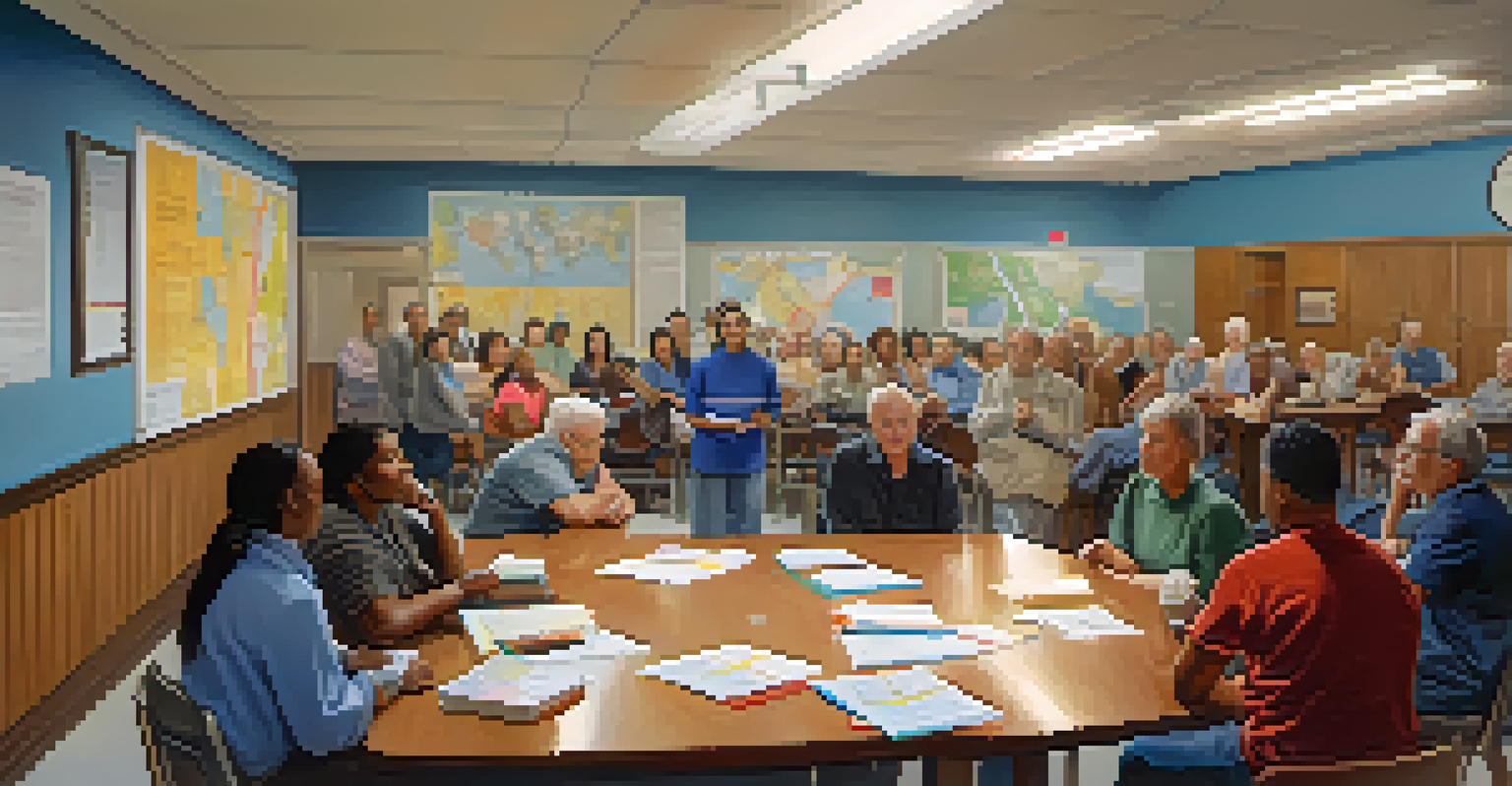Dallas Policing: Strategies for Community Engagement and Safety

Understanding the Importance of Community Policing in Dallas
Community policing is a strategy that emphasizes building relationships between police officers and the communities they serve. In Dallas, this approach is crucial for fostering trust and cooperation, which can lead to safer neighborhoods. By engaging with residents, officers can gain valuable insights into the unique challenges each community faces, allowing for more effective policing.
The police must be part of the community, not apart from it.
Moreover, community policing encourages officers to be seen as members of the community rather than outsiders. This shift in perception can significantly reduce tensions and promote open dialogue between police and citizens. When residents feel comfortable reaching out to law enforcement, it paves the way for collaboration in addressing crime and safety concerns.
To truly grasp the impact of community policing, consider how it transforms public perception. When citizens see officers participating in local events or attending neighborhood meetings, it humanizes the badge. This proactive engagement helps dismantle stereotypes and fosters a culture of mutual respect.
Key Strategies for Effective Community Engagement
Effective community engagement in policing requires a multi-faceted approach. One key strategy is to establish regular communication channels between the police and community members. This can include town hall meetings, social media updates, and community forums where residents can voice their concerns and suggestions.

Another essential strategy is the implementation of neighborhood watch programs. These initiatives empower residents to take an active role in their safety while fostering collaboration with law enforcement. By working together, communities can identify and address issues before they escalate, creating a more secure environment for everyone.
Community Engagement Builds Trust
Community policing fosters trust between law enforcement and residents through active engagement and open dialogue.
Additionally, training officers in cultural competency is vital. Understanding the diverse backgrounds and experiences of community members allows officers to respond appropriately to various situations. This leads to more effective interactions and reduces the likelihood of misunderstandings or conflicts.
The Role of Technology in Modern Policing
Technology plays a significant role in enhancing community engagement in policing. In Dallas, the use of social media platforms helps law enforcement connect with residents in real-time. By sharing updates, alerts, and community events, officers can foster a sense of belonging and keep citizens informed.
Community policing is not just a program; it is a philosophy that promotes organizational strategies that support the systemic use of community partnerships.
Moreover, data analytics can assist police departments in identifying crime trends and hotspots. By understanding where and when crimes occur, law enforcement can allocate resources more effectively. This proactive approach not only improves safety but also demonstrates a commitment to addressing community concerns.
Finally, utilizing mobile apps can empower residents to report non-emergency issues directly to the police. This immediate feedback loop helps officers understand community needs better and respond accordingly, further bridging the gap between law enforcement and citizens.
Building Trust Through Transparency and Accountability
Trust is the cornerstone of effective community policing, and transparency is key to building that trust. In Dallas, police departments are increasingly sharing information about their operations, policies, and outcomes with the public. This openness helps demystify law enforcement activities and fosters a sense of accountability.
Furthermore, implementing community advisory boards allows residents to provide input on policing strategies and practices. These boards create a platform for dialogue and collaboration, ensuring that community voices are heard in decision-making processes. This participatory approach reinforces the idea that policing is a shared responsibility.
Technology Enhances Communication
Leveraging technology, such as social media and data analytics, helps police departments connect with communities and address safety concerns effectively.
Lastly, accountability measures, such as body-worn cameras, enhance transparency. By documenting interactions between police officers and the community, these devices provide an objective record that can be reviewed if concerns arise. This not only protects citizens but also supports officers in their efforts to maintain professionalism.
Involving Youth in Community Policing Initiatives
Engaging youth in community policing initiatives is vital for fostering positive relationships between young people and law enforcement. Programs that involve mentorship, education, and outreach can help bridge the gap between officers and the younger generation in Dallas. Such initiatives not only empower youth but also cultivate a sense of responsibility and civic engagement.
For example, police departments can organize youth programs that focus on leadership development and conflict resolution. By equipping young individuals with valuable skills, they are more likely to become advocates for safety and positive change within their communities. This proactive approach can reduce crime rates and instill a sense of pride and ownership among youth.
Additionally, fostering open dialogue between police and youth can dispel misconceptions and build trust. By creating safe spaces for discussions, both parties can share their perspectives, leading to greater understanding and collaboration. When youth feel heard, they are more likely to engage positively with law enforcement.
Collaborating with Local Organizations for Better Outcomes
Collaboration with local organizations is essential for enhancing community policing efforts in Dallas. Non-profits, schools, and faith-based organizations can provide valuable support and resources that complement law enforcement initiatives. By working together, these entities can address underlying community issues, such as poverty and education, that often contribute to crime.
For instance, partnering with local schools can create programs focused on conflict resolution and social-emotional learning. By intervening early and providing students with the tools they need, these programs can help prevent future conflicts and foster a safer environment. This collaborative approach reinforces the idea that safety is a community-wide effort.
Collaboration Strengthens Safety Efforts
Partnering with local organizations and involving youth in initiatives fosters a sense of shared responsibility for community safety.
Moreover, involving local organizations in community policing initiatives can help build trust and rapport with residents. When citizens see their community leaders and organizations working alongside law enforcement, it sends a strong message of unity and commitment to safety. This partnership can significantly enhance the overall effectiveness of policing strategies.
Evaluating and Adapting Policing Strategies Over Time
To ensure the effectiveness of community policing strategies, regular evaluation and adaptation are necessary. Law enforcement agencies in Dallas must assess their initiatives' impact on community safety and engagement continuously. This involves collecting feedback from residents and analyzing crime data to identify areas for improvement.
Additionally, adapting strategies based on community needs is crucial. As neighborhoods evolve, so too should the approaches to policing. By remaining flexible and responsive, law enforcement can address emerging challenges and maintain strong relationships with residents.

Finally, involving the community in the evaluation process can enhance accountability. By soliciting input from citizens on what works and what doesn’t, police departments can build trust and demonstrate their commitment to serving the community. This collaborative approach helps ensure that policing strategies are relevant and effective.